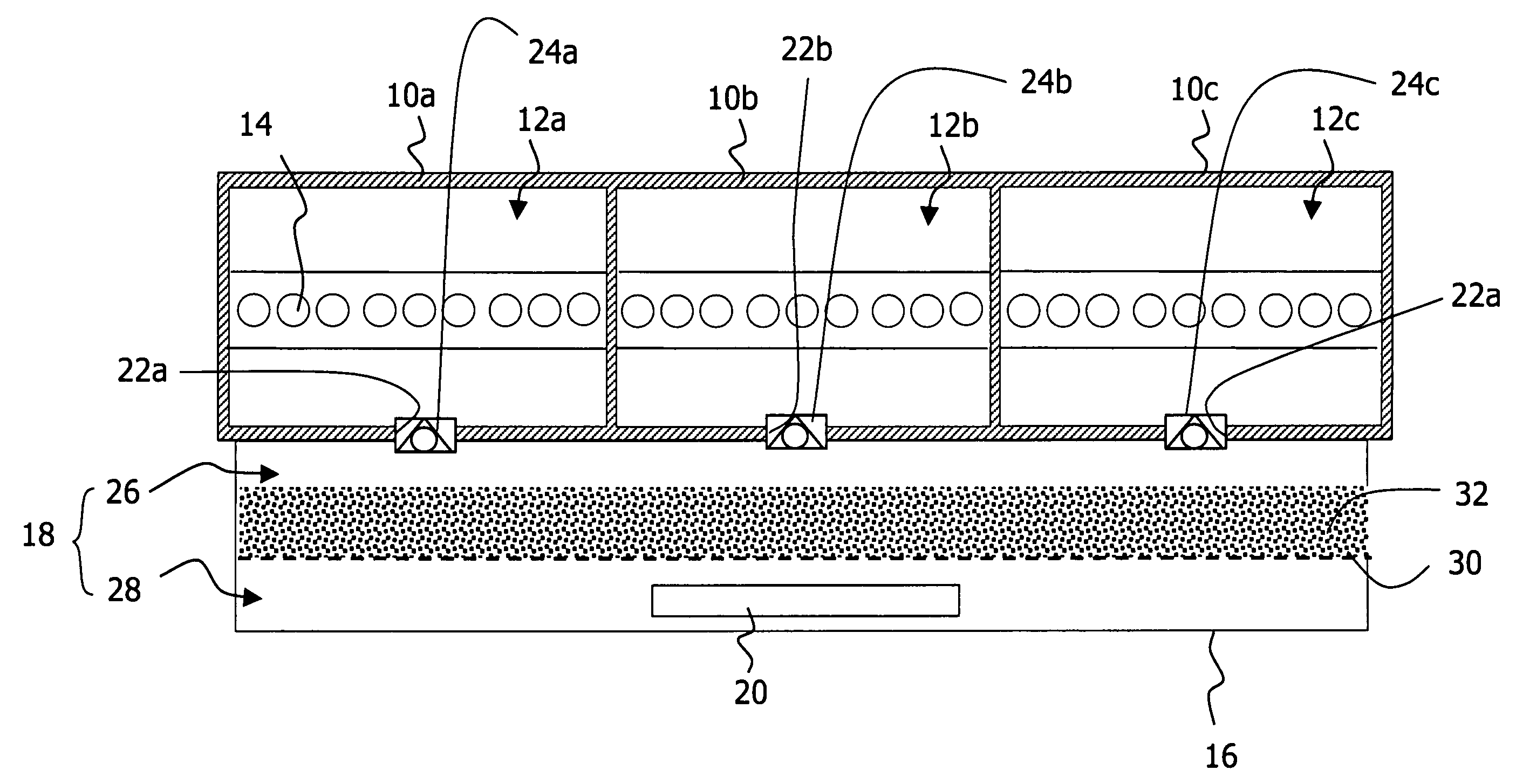Gas-insulated electrical installation provided with a device for dissipating energy produced by an electric arc
a technology of electric arc and gas insulation, which is applied in the direction of overvoltage protection resistors, substation/switching arrangement casings, emergency protective arrangements for limiting excess voltage/current, etc., can solve the problems of short circuit giving rise to electric arc of very high energy, electric arc from destroying the installation and its environment, and too violent escape of hot or inflamed gases outside the enclosure. , to achieve the effect of great efficiency
- Summary
- Abstract
- Description
- Claims
- Application Information
AI Technical Summary
Benefits of technology
Problems solved by technology
Method used
Image
Examples
Embodiment Construction
[0025]With reference to FIG. 1, a high-voltage electrical installation comprises a sealed enclosure 10 forming a containment 12 containing a high dielectric strength gas, for example sulphur hexafluoride, and housing a high-voltage functional unit 13, represented in schematic manner by a broken line in FIG. 1, comprising electrical conductors under high voltage, that may be connected to electrical apparatuses such as for example circuit breakers, disconnectors, earthing switches, cut-outs, switches, or distribution transformers or measuring auxiliaries and connected to the outside by means of bushings 14. This sealed enclosure 10 is arranged on a base 16 the walls whereof form, with a bottom wall of the enclosure, a cooling enclosure 18 provided at the bottom part with an escape outlet 20. The bottom wall of the containment 12 is provided with an outlet orifice 22 making the containment communicate with the cooling enclosure. In normal operation, this orifice 22 is closed by a membr...
PUM
 Login to View More
Login to View More Abstract
Description
Claims
Application Information
 Login to View More
Login to View More - R&D
- Intellectual Property
- Life Sciences
- Materials
- Tech Scout
- Unparalleled Data Quality
- Higher Quality Content
- 60% Fewer Hallucinations
Browse by: Latest US Patents, China's latest patents, Technical Efficacy Thesaurus, Application Domain, Technology Topic, Popular Technical Reports.
© 2025 PatSnap. All rights reserved.Legal|Privacy policy|Modern Slavery Act Transparency Statement|Sitemap|About US| Contact US: help@patsnap.com



